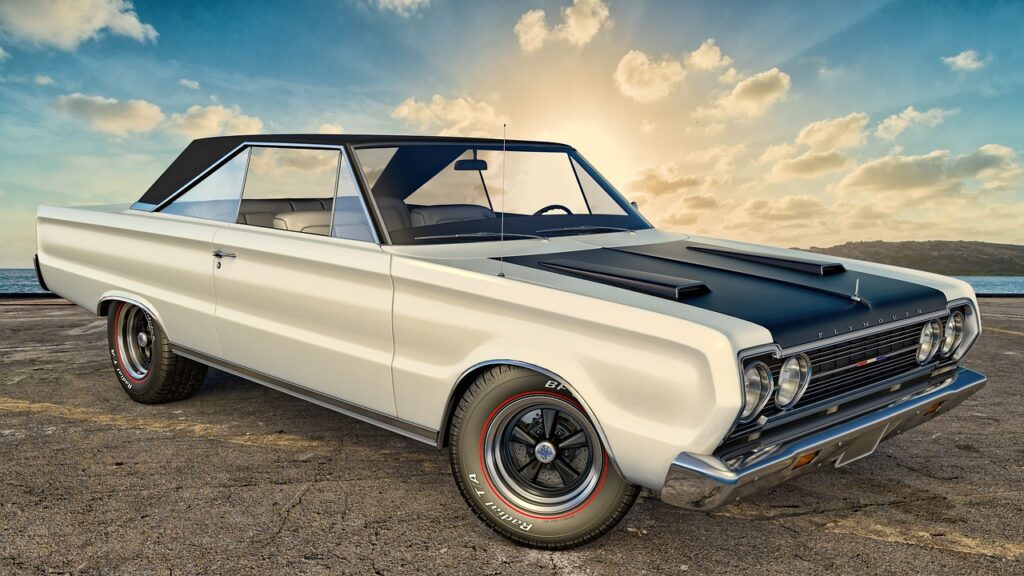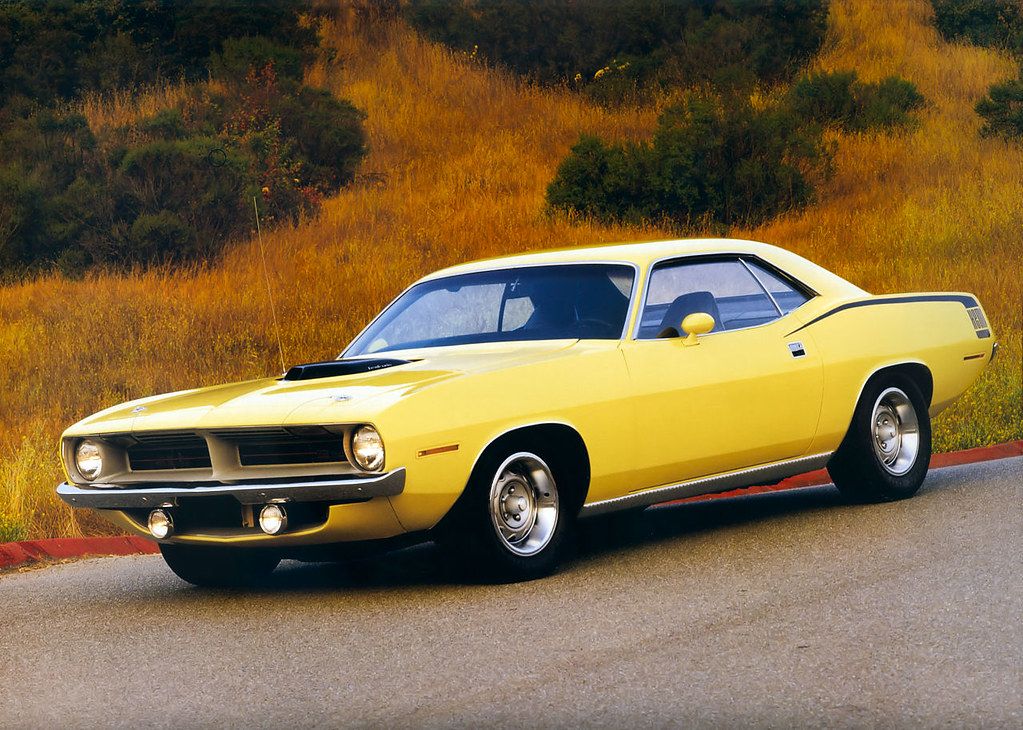
For enthusiasts and collectors alike, the term ‘muscle car’ often conjures images of the legendary 1970 Hemi ‘Cuda or the formidable big-block Chevelle SS. These iconic machines are undoubtedly the go-to benchmarks when discussing rare American performance, commanding prices that frequently soar past the $100,000 mark for pristine, original examples. While their allure is undeniable, the steep investment required to acquire such titans can be a significant barrier for many who dream of owning a piece of automotive history. Yet, the story of American muscle extends far beyond these well-trodden paths.
Beyond the headline-grabbing auctions and perennial favorites, a thrilling world of undervalued, unique, and equally powerful muscle cars awaits discovery. These hidden gems, often characterized by atypical bodies paired with serious muscle car hardware underneath, represent an exciting frontier for those looking to find and restore a distinctive piece of Americana. They are not tucked away in secret vaults but rather, as the saying goes, are “out in the open,” sometimes found in personal garages or even on small dealer lots where the focus is more on everyday pickups than on these vintage performance machines.
This article aims to shine a spotlight on ten such overlooked models—vehicles that deliver big engines, bold looks, and a compelling performance pedigree, yet have historically flown under the radar of mainstream collectors. These are the smart picks for the savvy enthusiast, offering an opportunity to acquire a classic muscle car that is currently affordable and relatively easy to find. However, as the automotive world continues to recognize their unique value and scarcity, prices are almost certainly destined to climb. Buckle up as we delve into the first five of these muscle car best-kept secrets, each one a testament to American engineering and an exciting prospect for the discerning collector.
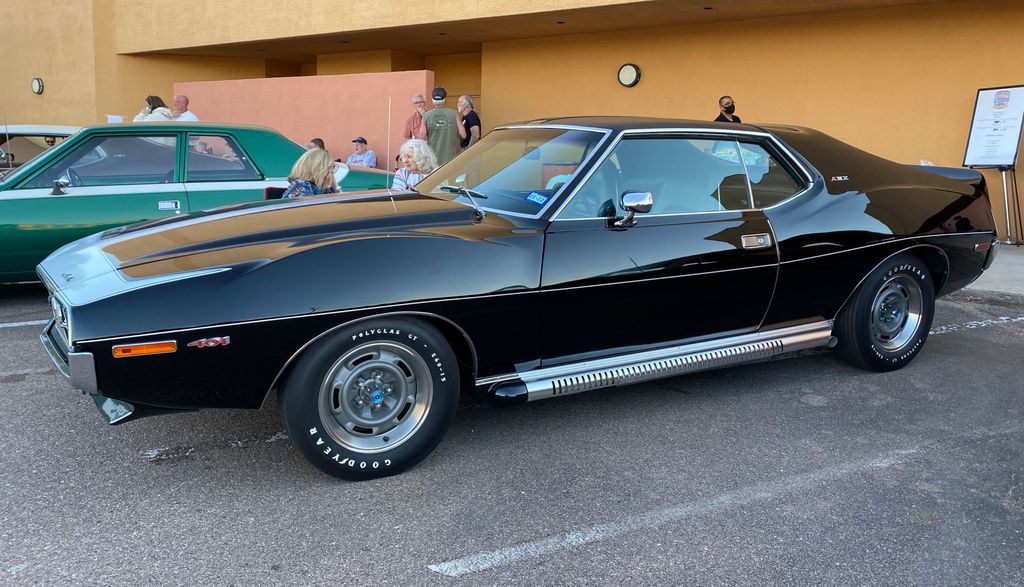
1. **1971 AMC Javelin AMX – The Underdog Muscle Car**The 1971 AMC Javelin AMX stands as a compelling case study in overlooked performance, a testament to what happens when a powerful machine from a smaller brand fights for recognition against the automotive giants. While names like Mustang and Camaro dominate the collective memory of the muscle car era, this AMC creation boasts an equally strong identity and impressive capabilities. It simply hasn’t garnered the widespread attention it truly deserves, making it a genuine underdog in the fiercely competitive landscape of classic American performance.
Underneath its bold, aggressive styling lay a potent 401 V8 engine, delivering the kind of raw power and exhilarating torque that defined the muscle car movement. The Javelin AMX was not merely a stylistic statement; it was engineered to perform, offering a driving experience that could stand toe-to-toe with its more famous contemporaries. Its rarity, coupled with its inherent power, makes it an intriguing option for collectors seeking something off the beaten path, a vehicle that offers significant performance without the exorbitant price tag typically associated with high-demand models.
What makes the 1971 AMC Javelin AMX particularly appealing today is its current market position. While many people remain focused on the “big brands,” this AMC is both rare and undeniably powerful, yet its prices remain surprisingly low. This affords an incredible opportunity for collectors to invest in a piece of muscle car history before its true value is widely acknowledged. The consensus among enthusiasts is that these values won’t stay low forever, making the Javelin AMX a smart acquisition for those who appreciate unique engineering and the thrill of a rising asset.
Car Model Information: 2015 Dodge Challenger SXT Plus
Name: AMC Javelin
Caption: 1971 AMC Javelin SST
Manufacturer: American Motors Corporation
Aka: unbulleted list
Production: 1967–1974
ModelYears: 1968–1974
Assembly: unbulleted list
Designer: Dick Teague
Class: unbulleted list
BodyStyle: hardtop
Layout: Front-engine, rear-wheel drive layout
Platform: AMC’s “junior” cars
Predecessor: Rambler Marlin
Categories: 1970s cars, AMC vehicles, All articles that may contain original research, All articles with dead external links, All articles with unsourced statements
Summary: The AMC Javelin is an American front-engine, rear-wheel-drive, two-door hardtop automobile manufactured by American Motors Corporation (AMC) across two generations, 1968 through 1970 and 1971 through 1974 model years. The car was positioned and marketed in the pony car market segment.
Styled by Dick Teague, the Javelin was available in a range of trim and engine levels, from economical pony car to muscle car variants. In addition to manufacture in Kenosha, Wisconsin, Javelins were assembled under license in Germany, Mexico, Philippines, Venezuela, as well as Australia – and were marketed globally. American Motors also offered discounts to U.S. military personnel, and cars were taken overseas.
The Javelin won the Trans-Am race series in 1971, 1972, and 1976. The second-generation AMX variant was the first pony car used as a standard vehicle for highway police car duties by an American law enforcement agency.
Get more information about: AMC Javelin
Buying a high-performing used car >>>
Brand: AMC Model: Javelin AMX
Price: $16,467 Mileage: 95,860 mi.
Read more about: Gearhead Gold: Unearthing the 14 Most Underrated Muscle Cars Ever Built
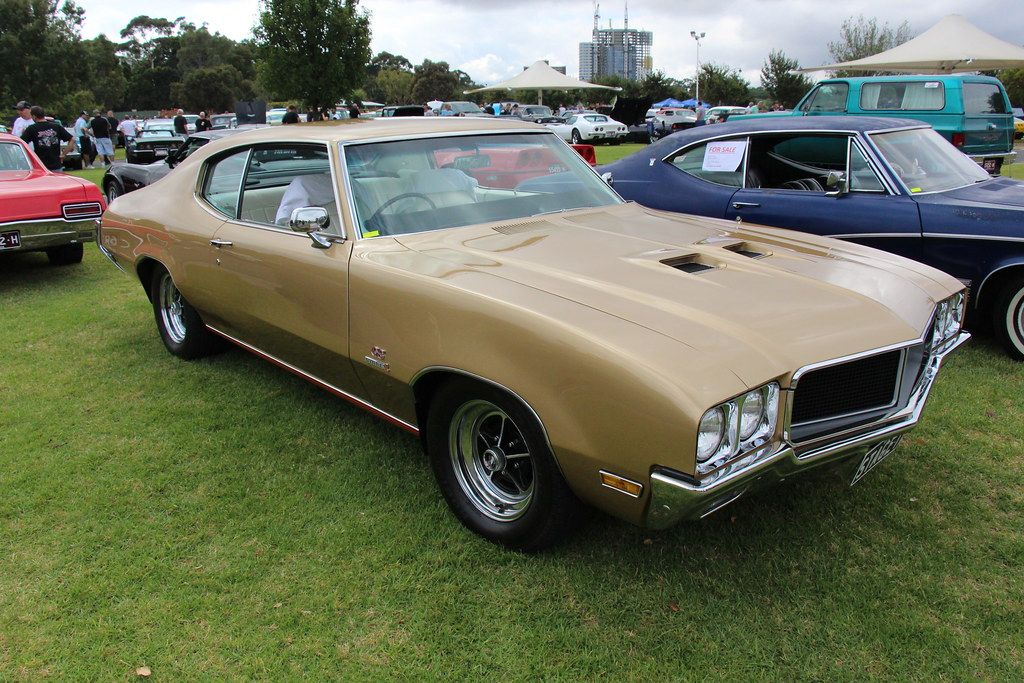
2. **1970 Buick GS 455 Stage 1 – The Luxury Muscle Sleeper**When one thinks of a muscle car, images of stripped-down, aggressive machines built for speed often come to mind. However, the 1970 Buick GS 455 Stage 1 masterfully challenged this stereotype, presenting itself as a classy cruiser that deceptively hid a monumental amount of muscle beneath its elegant exterior. This blend of sophisticated styling and brutal power has made it a true “sleeper” in the annals of muscle car history, often overlooked by those expecting a more overt display of performance.
Its heart was a truly colossal 455 V8 engine, an engineering marvel that, in its Stage 1 tune, made the Buick GS 455 one of the absolute fastest cars of its era. This engine was not just about raw horsepower; it was a torque monster, delivering an unforgettable driving experience characterized by relentless acceleration. The capability of this powerplant, coupled with Buick’s commitment to a more refined ride, created a unique proposition in the muscle car market: a vehicle that could comfortably cruise yet unleash ferocious power at a moment’s notice.
Despite its significant performance credentials and distinctive personality, many collectors historically overlooked the 1970 Buick GS 455 Stage 1. However, this trend is beginning to reverse course, as astute enthusiasts are increasingly recognizing its immense value and rarity. As a result, prices for these magnificent machines are now climbing fast, transforming this once-underestimated luxury muscle car into a rapidly appreciating asset. It represents an excellent choice for those who desire both uncompromising power and a touch of understated elegance in their classic collection.
Car Model Information: 2015 Dodge Challenger SXT Plus
Name: Buick Regal
Caption: 2020 Regal Sportback
Manufacturer: Buick
ModelYears: Unbulleted list
Sp: us
Predecessor: Buick Skylark#Second generation (1968–1972),Buick Century
Successor: Buick LaCrosse
Categories: 1980s cars, 1990s cars, 2000s cars, 2010s cars, 2020s cars
Summary: The Buick Regal is a line of mid-size cars marketed by Buick since 1973. Serving as the premium mid-size/intermediate car of the Buick product range for nearly its entire production, the Regal initially served as the divisional counterpart of the Pontiac Grand Prix and Oldsmobile Cutlass Supreme; since the late 2000s, the model line has been derived from the Opel Insignia. The Regal also serves as the basis of the high-performance Grand National, Gran Sport (GS), and Buick GNX coupes.
Through its production, the Regal has been marketed under a wide variety of body styles, including two-door coupes and four-door sedans (currently in production), along with a 5-door liftback sedan and a 5-door station wagon; the latter (the 2018-2020 Regal TourX) was the first Buick station wagon marketed since the retirement of both the Century and Roadmaster Estates after 1996. The turbocharged LD5 3.8L V6 used in the second generation was used to showcase the motorsports presence of the brand; though offered with other vehicles (including Chevrolets and Pontiacs), the turbocharged engine is most commonly associated with the Regal. During the 1990s, the V6 regained forced induction, with a supercharger replacing the turbocharger.
In 1999, General Motors commenced sales of its vehicles in China, with the Buick Regal serving as its introductory model of the joint venture SAIC-GM. After 2004, Buick retired the model line in North America, as it replaced both the Regal and the Century with the Buick LaCrosse. Following the introduction of the second-generation Regal for China for 2008, the model line returned to North America for the 2011 model year, slotted slightly below the LaCrosse. Following the introduction of the sixth-generation Regal (sourced entirely from Opel) for 2018, GM sold Opel to PSA (now Stellantis), ending sales in North America after the 2020 model year. Currently, the Insignia B-derived Regal remains in production by SAIC-GM.
Get more information about: Buick Regal
Buying a high-performing used car >>>
Brand: Buick Model: GS 455 Stage 1
Price: $16,467 Mileage: 95,860 mi.
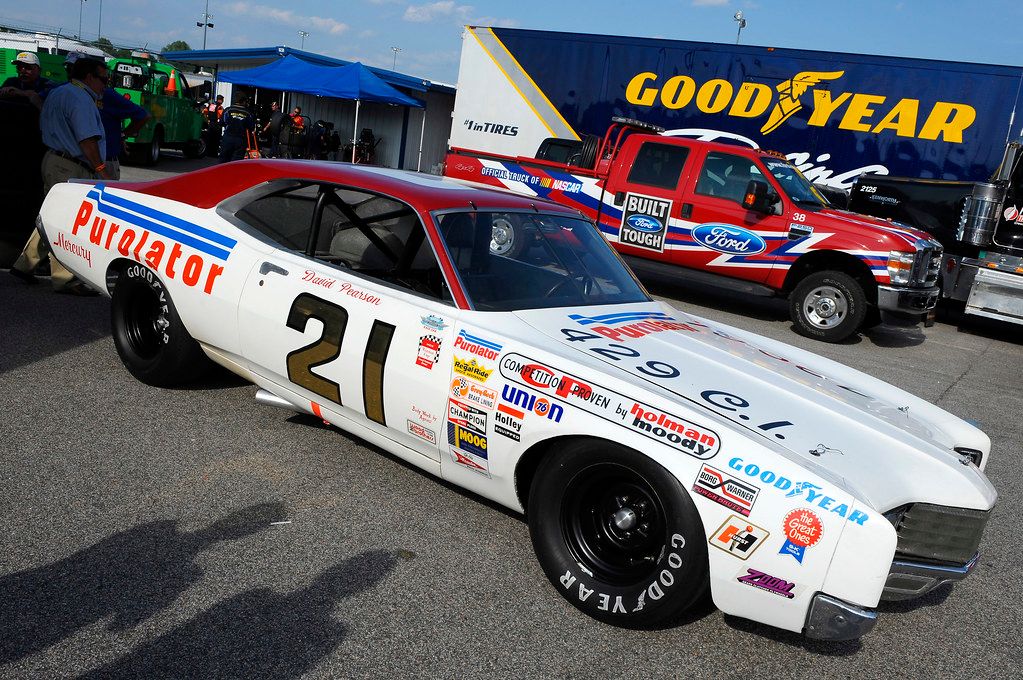
3. **1969 Mercury Cyclone Spoiler II – Built for NASCAR Glory**The 1969 Mercury Cyclone Spoiler II embodies the very essence of purpose-built performance, a machine meticulously crafted not just for the street, but for the unforgiving demands of the NASCAR track. This car was born from the fierce competition of stock car racing, where aerodynamic efficiency and raw V8 power were paramount to victory. Its distinctive design cues were not merely aesthetic; they were functional, serving a critical role in its quest for glory on the oval.
Central to its track-bred lineage was a special aerodynamic design, featuring an extended nose and a recessed grille that were crucial for stability and speed at high velocities. This unique shaping, which immediately sets it apart from more conventional muscle cars, was a direct response to the aero wars raging in NASCAR at the time. Paired with this cutting-edge design was strong 429 V8 power, an engine capable of propelling the Cyclone Spoiler II to speeds that allowed it to genuinely compete for wins. This combination of specialized aerodynamics and formidable power makes it a fascinating piece of racing history.
Despite its remarkable heritage and clear capabilities, the 1969 Mercury Cyclone Spoiler II is a car that many people have simply forgotten about. Its rarity and its singular focus on speed should place it among the most sought-after muscle cars, yet it remains relatively off the mainstream radar. This oversight, however, presents a significant advantage for today’s collector. Currently, it stands as one of the best muscle car deals out there, offering a rare opportunity to own a NASCAR-bred champion without the stratospheric prices of its more famous contemporaries.
Car Model Information: 2015 Dodge Challenger SXT Plus
Name: Mercury Cyclone Spoiler II
Manufacturer: Mercury (division)
Aka: Ford Torino Talladega
Production: 1969
ModelYears: 1969
Class: Race car
BodyStyle: fastback
Layout: FR layout
Designer: FoMoCo
Categories: All articles needing additional references, All articles with unsourced statements, Articles needing additional references from July 2025, Articles with short description, Articles with unsourced statements from April 2025
Summary: The Mercury Cyclone Spoiler II is a muscle car that was produced by Mercury in early 1969. The Mercury Cyclone Spoiler II was a special, more aerodynamic version of the Mercury Cyclone. It was produced specifically to compete against the Dodge Charger Daytona and Plymouth Superbird produced by Chrysler, and the nearly identical Ford Torino Talladega, in NASCAR stock car racing, and was sold to the public only because homologation rules required a minimum number of cars (500 in 1969) be produced and made available for sale to the public. A total of 503 cars were built in both Yarborough (285) and Gurney (215) versions, a during the first few weeks of 1969.
Get more information about: Mercury Cyclone Spoiler II
Buying a high-performing used car >>>
Brand: Mercury Model: Cyclone Spoiler II
Price: $16,467 Mileage: 95,860 mi.
Read more about: Gearhead Gold: Unearthing the 14 Most Underrated Muscle Cars Ever Built

4. **1974 Pontiac GTO – The Last of the Line**The 1974 Pontiac GTO holds a poignant place in muscle car history, representing the bittersweet culmination of an era. It was the final year for the classic GTO before this legendary nameplate faded out, signaling a significant shift in the automotive landscape. For many, the GTO is synonymous with the golden age of muscle, and this particular model serves as a powerful historical marker for the end of that glorious chapter.
Even in its swansong year, the 1974 GTO continued to embody the core tenets of the muscle car philosophy, offering a strong 400 V8 engine and the bold looks that had defined the brand for a decade. While it may have been a product of evolving regulations and a changing market, it still delivered impressive power and an undeniable presence on the road. Its design maintained the aggressive stance and performance-oriented aesthetics that GTO enthusiasts had come to love, ensuring that the “Goat” went out with a respectable roar, not a whimper.
Because it marks the last of its kind, one might expect the 1974 GTO to be highly prized. However, many collectors have historically overlooked it, perhaps favoring earlier, more powerful iterations from the genre’s peak. Consequently, prices for this significant model are currently quite low, making it an exceptionally smart acquisition for those who understand its historical importance. This undervaluation, however, is unlikely to last forever, as the appreciation for “last of” models and their unique place in automotive heritage steadily grows among discerning collectors.
Car Model Information: 1966 Pontiac GTO Coupe
Name: Pontiac GTO
Caption: 2005 Pontiac GTO
Manufacturer: Pontiac (automobile),Holden
Class: Mid-size car,Compact car,Mid-size car
Production: 1963–1974,2003–2006
Predecessor: Pontiac Tempest
Layout: Front-engine, rear-wheel-drive layout
Categories: 1970s cars, 2000s cars, All articles with unsourced statements, Articles with short description, Articles with unsourced statements from October 2008
Summary: The Pontiac GTO is a front-engine, rear-drive, two-door, and four-passenger automobile manufactured and marketed by the Pontiac division of General Motors over four generations from 1963 until 1974 in the United States — with a fifth generation made by GM’s Australian subsidiary, Holden, for the 2004 through 2006 model years.
The first generation of the GTO is credited with popularizing the muscle car market segment in the 1960s. Some consider the Pontiac GTO to have started the trend with all four domestic automakers offering a variety of competing models.
For the 1964 and 1965 model years, the GTO was an optional package on the intermediate-sized Pontiac LeMans. The 1964 GTO vehicle identification number (VIN) started with 22, while the 1965 GTO VIN began with 237. The GTO was designated as a separate Pontiac model from 1966 through 1971 (VIN 242…). It became an optional package again for the 1972 and 1973 intermediate LeMans. For 1974, the GTO was an optional trim package on the compact-sized Ventura.
The GTO model was revived for the 2004 through 2006 model years as a captive import for Pontiac, a left-hand drive version of the Holden Monaro, itself a coupé variant of the Holden Commodore.
Get more information about: Pontiac GTO
Buying a high-performing used car >>>
Brand: Pontiac Model: GTO
Price: $59,991 Mileage: 4,408 mi.
Read more about: Remember These? 14 ‘Invisible’ Cars You Totally Forgot Existed (Until They Passed You On The Road)
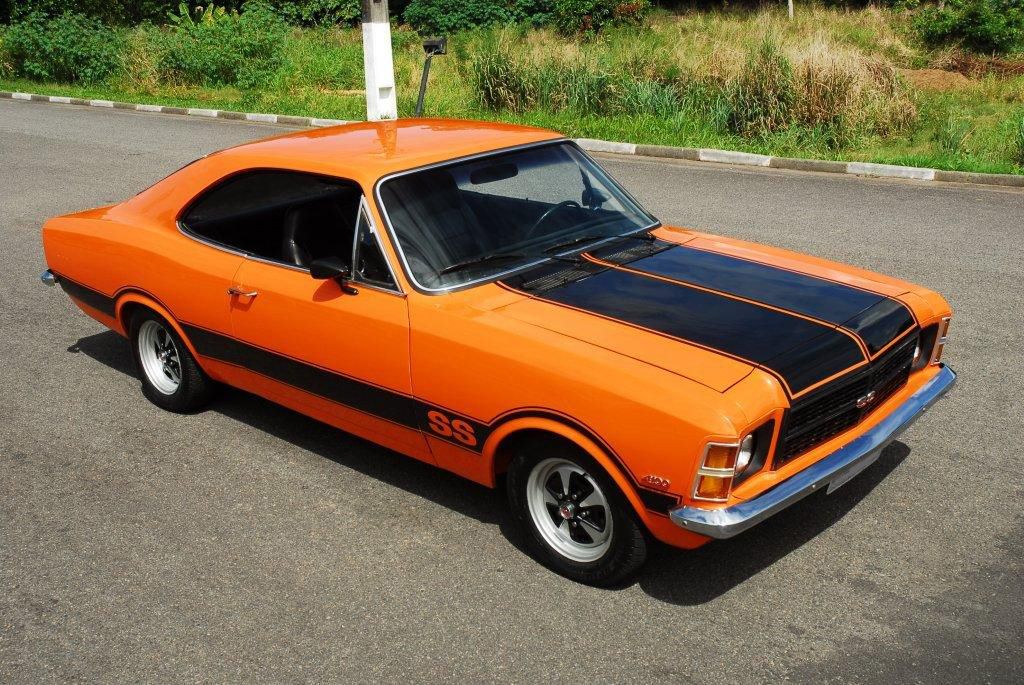
5. **1978 Chevrolet Nova SS – The Forgotten SS**In the grand narrative of Chevrolet performance, models like the Camaro and Chevelle SS often steal the spotlight, overshadowing other equally deserving machines. The 1978 Chevrolet Nova SS is a prime example of this phenomenon, a solid muscle car that, through no fault of its own, simply hasn’t received the widespread attention it deserves. It exists as a quiet performer in the shadow of its more celebrated siblings, making it a truly “forgotten SS” in the eyes of many enthusiasts.
Despite its often-overlooked status, this Nova SS came equipped with a strong V8 engine and all the quintessential SS styling cues, signaling its performance intentions. It delivered the robust power and distinctive visual flair that collectors associate with Chevrolet’s Super Sport line, offering a potent blend of acceleration and aggressive aesthetics. While perhaps not as raw as some of its earlier counterparts, it maintained the spirit of muscle during a period of significant change in the automotive industry, proving that performance was still a priority for Chevrolet.
The primary reason for its relative obscurity is that most buyers and collectors tend to focus their attention on the more iconic Camaros or Chevelles from earlier years. This diversion of interest has kept prices for the 1978 Chevrolet Nova SS surprisingly low, even as values for other classic American muscle cars continue their upward trajectory. For the smart collector, this makes it an excellent and strategic choice, offering a genuine SS experience at an accessible price point, particularly before its true market potential is fully realized and values inevitably begin to rise.
Having explored the initial lineup of underestimated powerhouses, our journey into the world of overlooked muscle cars continues. We now turn our attention to the next five forgotten legends, each representing a unique chapter in American automotive history, offering a compelling blend of engineering prowess, distinctive design, and a future value trajectory that savvy collectors are keenly watching. These machines, though perhaps less celebrated than their more famous contemporaries, deliver unmistakable muscle car charisma and performance that demand a closer look.
Car Model Information: 2009 Chevrolet Colorado LT Crew Cab
Caption: 1963 Chevrolet Chevy II 300 4-door sedan
Name: Chevrolet Chevy II / Nova
Manufacturer: unbulleted list
ModelYears: unbulleted list
Production: unbulleted list
Class: unbulleted list
Successor: unbulleted list
Categories: 1970s cars, 1980s cars, All articles needing additional references, Articles needing additional references from March 2025, Articles with short description
Summary: The Chevrolet Chevy II/Nova is a small automobile manufactured by Chevrolet, and produced in five generations for the 1962 through 1979, and 1985 through 1988 model years. Built on the X-body platform, the Nova was the top selling model in the Chevy II lineup through 1968. The Chevy II nameplate was dropped after 1968, with Nova becoming the nameplate for all of the 1969 through 1979 models. It was replaced by the 1980 Chevrolet Citation introduced in the spring of 1979. The Nova nameplate returned in 1985, produced through 1988 as a S-car based, NUMMI manufactured, subcompact based on the front wheel drive, Japan home-based Toyota Sprinter.
Get more information about: Chevrolet Chevy II / Nova
Buying a high-performing used car >>>
Brand: Chevrolet Model: Nova
Price: $10,950 Mileage: 127,501 mi.
Read more about: Future Fortunes on Four Wheels: 14 Classic Cars You Need to Buy Now Before Their Value Explodes
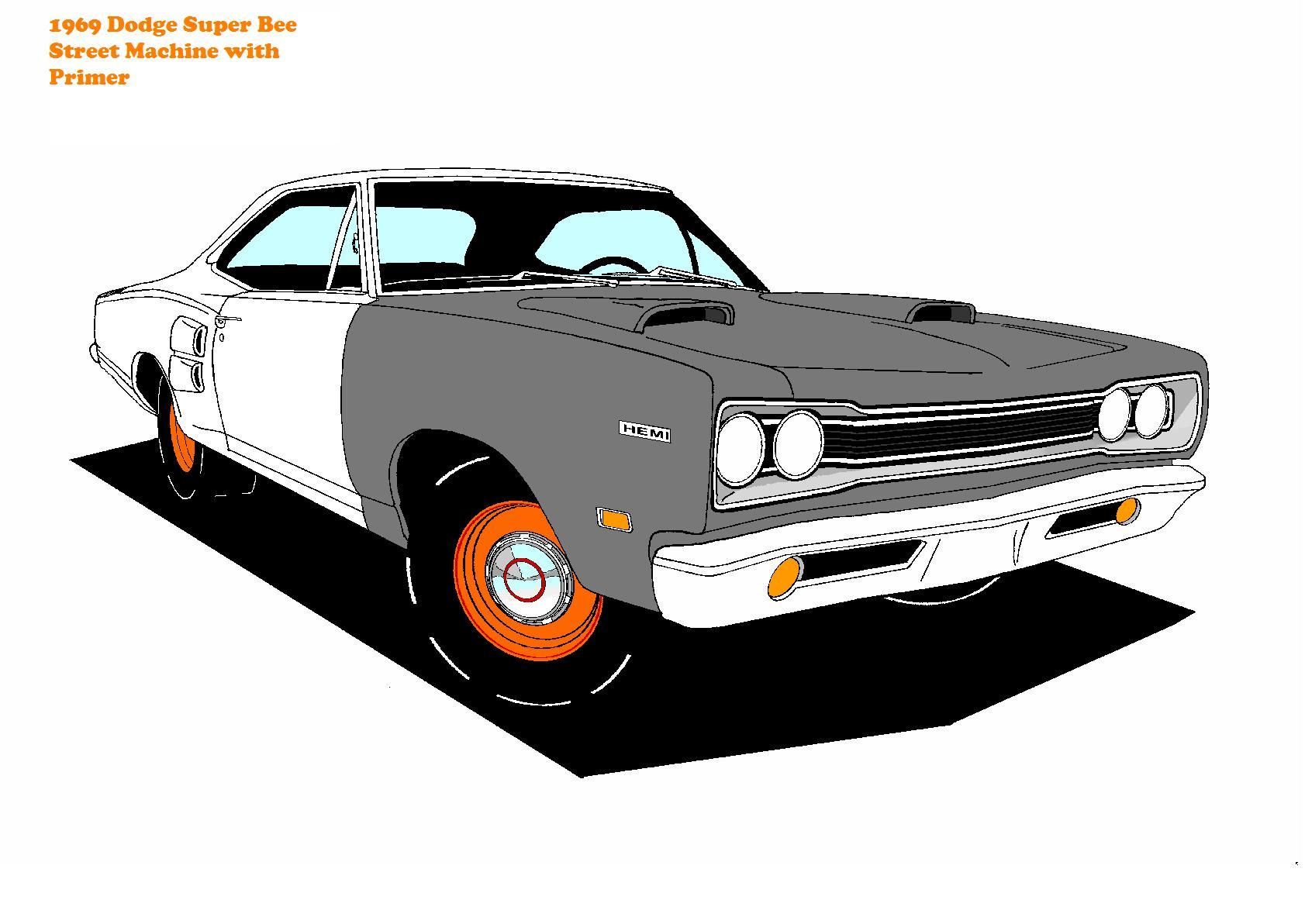
6. **1969 Dodge Super Bee 383 – The Budget Muscle Icon**The 1969 Dodge Super Bee 383 stands as a testament to the idea that immense power didn’t always have to come with an astronomical price tag. Dodge engineered the Super Bee to be a formidable contender, offering an accessible entry point into the high-performance muscle car segment without compromising on the raw, unadulterated thrill enthusiasts craved. This model was a direct answer to the market’s demand for a potent, no-frills machine, designed for the street and the drag strip alike, yet often overshadowed by its more expensive Hemi-equipped brethren.
At its heart was the robust 383 V8 engine, a powerplant celebrated for its impressive torque delivery and reliability. While it may not have boasted the headline-grabbing horsepower figures of the legendary 426 Hemi, the 383 cubic-inch engine was more than capable of providing exhilarating acceleration and a truly engaging driving experience. Its performance, coupled with the distinctive Super Bee styling, including its signature ‘bumblebee’ stripe, created a package that was both visually striking and genuinely fast, proving that a budget could still buy a serious piece of Mopar muscle.
Despite its undeniable merits and powerful attributes, the 1969 Dodge Super Bee 383 has historically flown under the radar of many mainstream collectors, who often gravitated towards higher-tier Hemi models. However, this oversight is rapidly diminishing as discerning enthusiasts recognize its compelling value proposition. Values for these impressive machines are now experiencing a rapid ascent, positioning the 383 Super Bee as a remarkably astute acquisition for those looking to secure a genuine Mopar icon before its market potential is fully realized.
Car Model Information: 2015 Dodge Challenger SXT Plus
Name: Dodge Super Bee
Manufacturer: Chrysler Corporation
Production: 1968–1971 , 1970–1980 (Mexico only) , 2007–2009 , 2012–2013
Layout: FR layout
Class: Muscle car
Caption: 1969 Dodge Coronet Super Bee A12 “Six Pack”
Categories: 1960s cars, 1970s cars, All articles needing additional references, All articles with dead external links, All articles with unsourced statements
Summary: The Dodge Super Bee is a mid-sized muscle car marketed by Dodge, that was produced for the 1968 through 1971 model years.
In Mexico, the Super Bee was based on a compact-sized Chrysler platform and marketed from 1970 until 1980.
The Super Bee model name was resurrected for the 2007, 2008, 2009, 2012, and 2013 Dodge Charger Super Bee models.
Get more information about: Dodge Super Bee
Buying a high-performing used car >>>
Brand: Dodge Model: Super Bee
Price: $16,467 Mileage: 95,860 mi.
Read more about: Unleash the Thrill: Top Sports Cars Under $100,000 for Performance-Minded Buyers
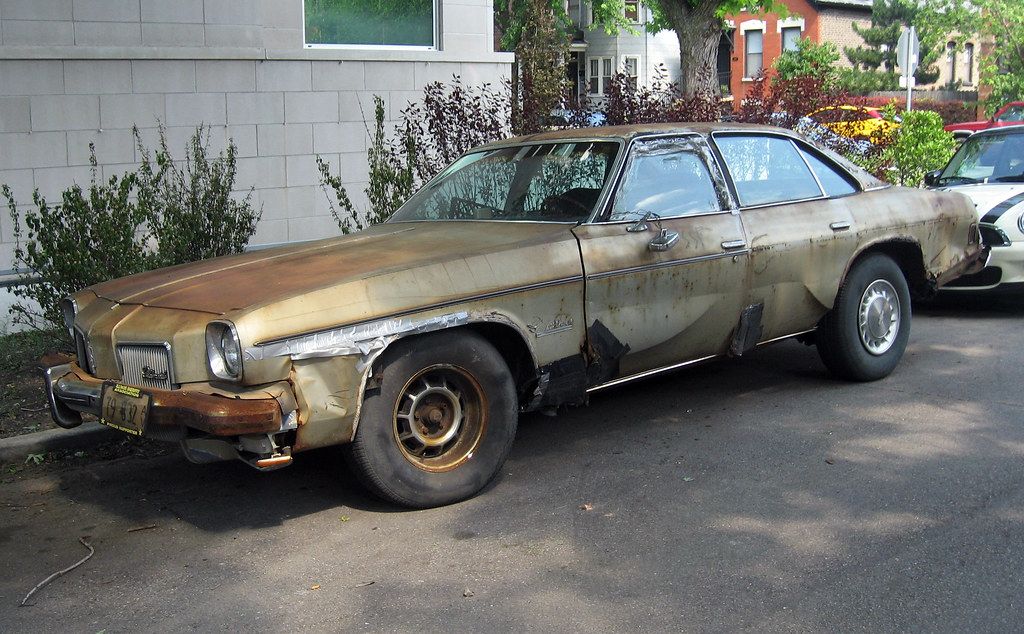
7. **1973 Oldsmobile Cutlass 442 – Overlooked Mid-’70s Muscle**The early 1970s marked a tumultuous period for muscle cars, with tightening emissions regulations and rising insurance costs impacting performance. Yet, the 1973 Oldsmobile Cutlass 442 emerged with a defiant spirit, showcasing bold aesthetics and a powerful engine option that kept the flame of muscle burning brightly. Despite its impressive capabilities and distinctive presence, this model often finds itself overlooked, largely due to its production year falling squarely within an era many associate with the decline of true muscle.
Beneath its restyled, aggressive exterior, which featured the signature 442 badging and a commanding stance, lay the option of a potent 455 V8 engine. This colossal powerplant, even in the face of stricter environmental controls, delivered substantial horsepower and immense torque, ensuring that the Cutlass 442 remained a formidable performer on the road. Its sophisticated suspension and comfortable interior also offered a more refined driving experience compared to some of its more raw competitors, blending brute force with a touch of Oldsmobile’s traditional luxury.
For years, collectors tended to favor earlier, pre-emissions models, leaving the 1973 Cutlass 442 in relative obscurity. However, as the appreciation for the diverse history of muscle cars broadens, this mid-’70s gem is gaining well-deserved recognition. Astute collectors are increasingly noting its unique place in the lineage, its robust performance, and its increasingly rare status. As a result, its market values are steadily and quietly appreciating, making it an excellent opportunity for those seeking a powerful and stylish classic that stands out from the usual crowd.
Car Model Information: 2015 Dodge Challenger SXT Plus
Name: Oldsmobile 442
Manufacturer: Oldsmobile
ModelYears: 1964–1980,1985–1987,1990–1991
Class: Muscle car
Layout: FR layout
Caption: 1971 Oldsmobile 442
Categories: 1960s cars, 1970s cars, 1980s cars, All articles with unsourced statements, Articles with short description
Summary: The Oldsmobile 4-4-2 is a muscle car produced by Oldsmobile between the 1964 and 1987 model years. Introduced as an option package for US-sold F-85 and Cutlass models, it became a model in its own right from 1968 to 1971, spawned the Hurst/Olds in 1968, then reverted to an option through the mid-1970s. The name was revived in the 1980s on the rear-wheel drive Cutlass Supreme and early 1990s as an option package for the new front-wheel drive Cutlass Calais.
The “4-4-2” name (pronounced “Four-four-two”) derives from the original car’s four-barrel carburetor, four-speed manual transmission, and dual exhausts. It was originally written “4-4-2” (with badging showing hyphens between the numerals), and remained hyphenated throughout Oldsmobile’s use of the designation. Beginning in 1965, the 4-4-2s standard transmission was a three-speed manual along with an optional two-speed automatic and four-speed manual, but were still badged as “4-4-2″s.
Because of this change, from 1965 on, according to Oldsmobile brochures and advertisements, the 4-4-2 designation referred to the 400 cubic inch engine, four-barrel carburetor, and dual exhausts. By 1968, badging was shortened to simply “442”, but Oldsmobile brochures and internal documents continued to use the “4-4-2” model designation.
Get more information about: Oldsmobile 442
Buying a high-performing used car >>>
Brand: Oldsmobile Model: Cutlass 442
Price: $16,467 Mileage: 95,860 mi.
Read more about: 13 Unassuming American Classics That Secretly Packed Absolute Monsters Under the Hood
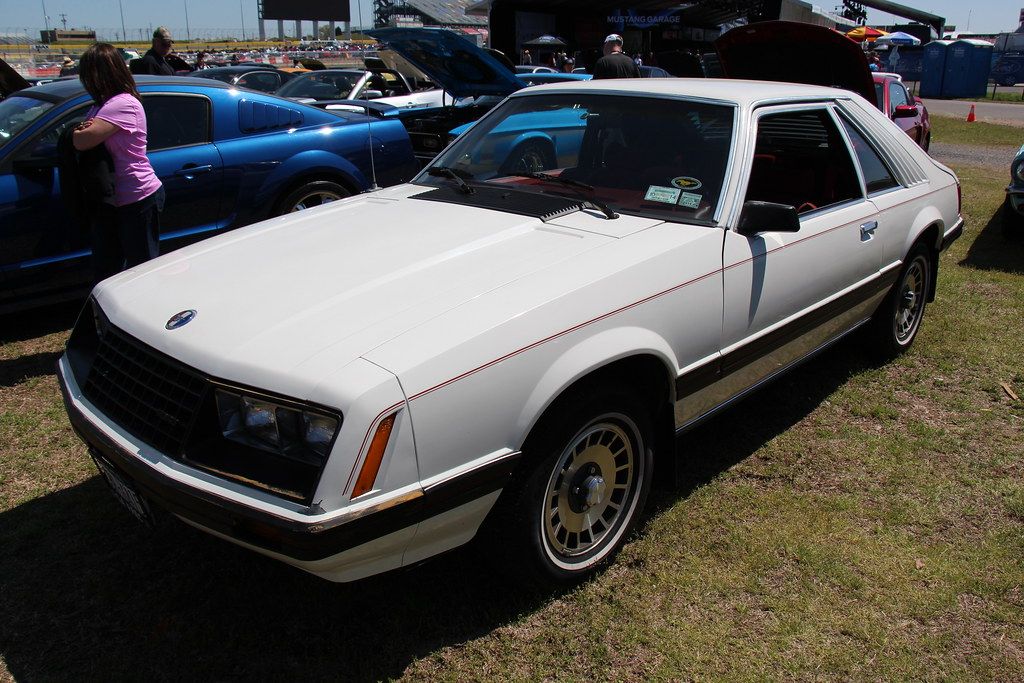
8. **1980 Ford Mustang Cobra Turbo – Pre-Fox Body Goldmine**Before the iconic Fox Body Mustang captivated a generation, Ford dared to experiment with a different kind of performance, exemplified by the 1980 Ford Mustang Cobra Turbo. This groundbreaking model broke away from the traditional big-displacement V8 formula, instead opting for a turbocharged four-cylinder engine. This innovative approach positioned the Cobra Turbo as a forward-thinking anomaly, yet its departure from the conventional muscle car ethos has often led to it being relegated to the footnotes of Mustang history, a truly forgotten piece of performance pioneering.
Equipped with a turbocharged 2.3-liter inline-four engine, this Mustang represented Ford’s early foray into forced induction as a means of generating impressive power from a smaller, more efficient package. While certainly different from its V8-powered predecessors, the turbo setup delivered a spirited and engaging driving experience, characterized by a distinct power surge and respectable acceleration for its era. The Cobra Turbo also featured distinctive styling cues, including a prominent hood scoop, unique graphics, and performance-oriented wheels, signaling its intent as a serious performance machine.
Despite its historical significance and unique engineering, the 1980 Mustang Cobra Turbo has often been overlooked in favor of later Fox Body V8s. However, as the market for vintage and rare performance cars continues to mature, early 1980s Mustangs like this are experiencing a resurgence in appreciation. Their scarcity, combined with their innovative powertrain, is leading to a steady climb in values. This makes the Cobra Turbo an intriguing ‘goldmine’ for collectors who value innovation and the thrill of owning a truly distinctive piece of automotive evolution, especially before its full value potential is widely acknowledged.
Car Model Information: 1966 Ford Mustang Base
Name: Ford Mustang
Caption: 2018 Ford Mustang GT 5.0
Aka: Ford T5 (Germany)
Manufacturer: Ford Motor Company
Production: March 1964 – present
ModelYears: 1965–present
Class: Unbulleted list
BodyStyle: Unbulleted list
Layout: Front-engine, rear-wheel-drive layout
Categories: 1970s cars, 1980s cars, 1990s cars, 2+2 coupés, 2000s cars
Summary: The Ford Mustang is a series of American automobiles manufactured by Ford. In continuous production since 1964, the Mustang is currently the longest-produced Ford car nameplate. Currently in its seventh generation, it is the fifth-best selling Ford car nameplate. The namesake of the “pony car” automobile segment, the Mustang was developed as a highly styled line of sporty coupes and convertibles derived from existing model lines, initially distinguished by “long hood, short deck” proportions.
Originally predicted to sell 100,000 vehicles yearly, the 1965 Mustang became the most successful vehicle launch since the 1927 Model A. Introduced on April 17, 1964 (16 days after the Plymouth Barracuda), over 400,000 units were sold in its first year; the one-millionth Mustang was sold within two years of its launch. In August 2018, Ford produced the 10-millionth Mustang; matching the first 1965 Mustang, the vehicle was a 2019 Wimbledon White convertible with a V8 engine.
The success of the Mustang launch led to multiple competitors from other American manufacturers, including the Chevrolet Camaro and Pontiac Firebird (1967), AMC Javelin (1968), and Dodge Challenger (1970). It also competed with the Plymouth Barracuda, which was launched around the same time. The Mustang also had an effect on designs of coupes worldwide, leading to the marketing of the Toyota Celica and Ford Capri in the United States (the latter, by Lincoln-Mercury). The Mercury Cougar was launched in 1967 as a unique-bodied higher-trim alternative to the Mustang; during the 1970s, it included more features and was marketed as a personal luxury car.
From 1965 until 2004, the Mustang shared chassis commonality with other Ford model lines, staying rear-wheel-drive throughout its production. From 1965 to 1973, the Mustang was derived from the 1960 Ford Falcon compact. From 1974 until 1978, the Mustang (denoted Mustang II) was a longer-wheelbase version of the Ford Pinto. From 1979 until 2004, the Mustang shared its Fox platform chassis with 14 other Ford vehicles (becoming the final one to use the Fox architecture). Since 2005, Ford has produced two generations of the Mustang, each using a distinct platform unique to the model line.
Through its production, multiple nameplates have been associated with the Ford Mustang series, including GT, Mach 1, Boss 302/429, Cobra (separate from Shelby Cobra), and Bullitt, along with “5.0” fender badging (denoting 4.9 L OHV or 5.0 L DOHC V8 engines).
Get more information about: Ford Mustang
Buying a high-performing used car >>>
Brand: Ford Model: Mustang
Price: $32,991 Mileage: 98,811 mi.
9. **1972 Plymouth Satellite Sebring Plus – The Road Runner’s Cousin**The 1972 Plymouth Satellite Sebring Plus embodies the quintessential B-body Mopar aesthetics and performance, yet it consistently flies under the radar compared to its more celebrated sibling, the Road Runner. Sharing much of its aggressive styling and robust engineering with the iconic Road Runner, the Sebring Plus offered a more understated, yet equally compelling, package for the discerning enthusiast. It’s a remarkable example of how a nearly identical machine can be overlooked, making it a hidden gem for those in the know.
Underneath its striking exterior, characterized by classic Mopar lines and a muscular stance, the Satellite Sebring Plus could be optioned with a range of solid V8 engines. While the legendary Hemi might not have been a factory option in the same vein as the Road Runner, these formidable V8s delivered ample horsepower and torque, ensuring a truly exhilarating driving experience. Its well-tuned suspension provided a confident and engaging ride, making it a capable performer for both spirited cruising and more aggressive driving. The design shared a strong family resemblance, giving it the visual impact of its more famous cousin.
For many years, the allure of the Road Runner meant that the Satellite Sebring Plus remained a more affordable alternative, often acquired by those seeking classic Mopar looks and performance without the premium price tag. However, the market is continually evolving, and collectors are increasingly turning their attention to these well-appointed, yet undervalued, B-body cars. Its current relative obscurity translates into accessible pricing, but this trend is unlikely to persist indefinitely. As more enthusiasts discover its close ties to the Road Runner and its inherent performance, prices for the 1972 Plymouth Satellite Sebring Plus are poised to appreciate significantly, making it a smart acquisition now.
Car Model Information: 2015 Dodge Challenger SXT Plus
Name: Plymouth Satellite
Manufacturer: Plymouth (automobile)
Production: 1964–1974
ModelYears: 1965–1974
Caption: 1966 Plymouth Satellite 2-door hardtop
Layout: FR layout
Class: Mid-size car
Predecessor: Plymouth Belvedere
Successor: Plymouth Fury
Platform: Chrysler B platform
Assembly: Lynch Road Assembly,Saint Louis Assembly
Categories: 1970s cars, All articles needing additional references, Articles needing additional references from April 2015, Articles with short description, Cars discontinued in 1974
Summary: The Plymouth Satellite is a mid-size automobile introduced in the 1965 model year as the top trim model in Plymouth’s “B” platform Belvedere line. Available initially in two-door hardtop and convertible models, the Satellite remained the top-of-the-line model until the 1967 model year. A station wagon version was added and a higher “Sport” trim introduced.
The Fury name was moved to Plymouth’s mid-size models for 1975, at which time the Satellite name was discontinued.
Get more information about: Plymouth Satellite
Buying a high-performing used car >>>
Brand: Plymouth Model: Satellite Sebring Plus
Price: $16,467 Mileage: 95,860 mi.
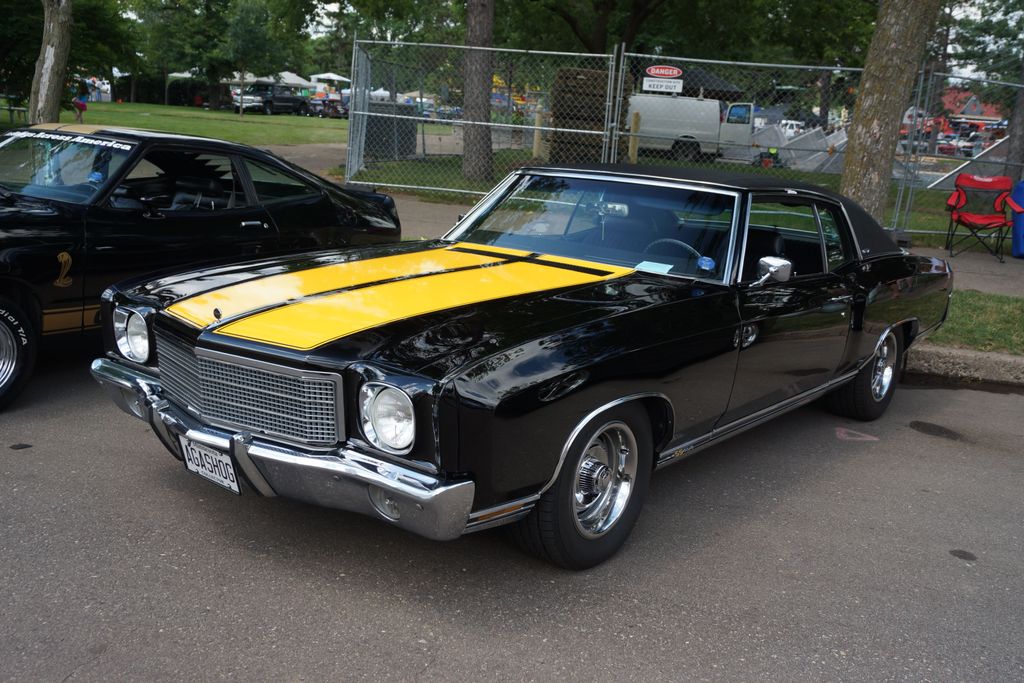
10. **1970 Chevrolet Monte Carlo SS 454 – Muscle Wrapped in Luxury**The 1970 Chevrolet Monte Carlo SS 454 stands as a unique proposition in the muscle car pantheon: a powerful beast cloaked in an elegant, almost luxurious, wrapper. While many muscle cars of the era were designed with a more stripped-down, aggressive aesthetic, the Monte Carlo SS 454 offered a sophisticated blend of comfort, style, and raw, unadulterated power. This distinctive combination often led to it being overlooked by collectors fixated on the more overtly performance-oriented Chevelles or Camaros, allowing it to become a true sleeper.
The heart of this magnificent machine was the legendary 454 cubic-inch V8 engine, and in its most potent LS6 configuration, it delivered an astonishing 450 horsepower. This colossal powerplant propelled the Monte Carlo SS with breathtaking acceleration, transforming what appeared to be a refined personal luxury coupe into an outright drag strip contender. Paired with a heavy-duty suspension and a robust drivetrain, the SS 454 offered uncompromising performance without sacrificing the upscale appointments that defined the Monte Carlo line.
Despite its impressive specifications and unique market position, the 1970 Chevrolet Monte Carlo SS 454 was, for a long time, overshadowed by its more famous Chevrolet stablemates. However, this period of undervaluation is rapidly drawing to a close. Discerning collectors are increasingly recognizing the Monte Carlo SS 454 for what it truly is: a rare, powerful, and exceptionally stylish muscle car that offers the best of both worlds. As this awareness grows, prices for these remarkable vehicles are climbing fast, making it a rapidly appreciating asset and a highly coveted prize for those who appreciate both luxury and savage speed.
Car Model Information: 2015 Dodge Challenger SXT Plus
Name: Chevrolet Monte Carlo
Manufacturer: Chevrolet
Production: 1969–1987,1994–2007
ModelYears: 1970–1988,1995–2007
Class: Personal luxury car
BodyStyle: coupé
Layout: FR layout
Caption: 2006 Chevrolet Monte Carlo LS
Categories: 1980s cars, 1990s cars, 2000s cars, All Wikipedia articles written in American English, All articles needing additional references
Summary: The Chevrolet Monte Carlo is a two-door coupe that was manufactured and marketed by the Chevrolet division of General Motors. Deriving its name from the city in Monaco, the Monte Carlo was marketed as the first personal luxury car of the Chevrolet brand. Introduced for the 1970 model year, the model line was produced across six generations through the 2007 model year, with a hiatus from 1989 until 1994. The Monte Carlo was a variant of the Pontiac Grand Prix throughout its production.
From 1970 until 1972, the Monte Carlo rode on the unique “A-Special” platform with the Grand Prix, shifting to the standard A-body intermediate chassis from the 1973 through 1977 model years. For 1978, the Monte Carlo line underwent downsizing, but was still considered a midsized coupe. The rear-wheel drive A-body platform of this generation of Monte Carlo was redesignated as the G-body when GM’s front-wheel drive A-body cars were introduced for the 1982 model year. After an abbreviated 1988 model year, the Monte Carlo was replaced by the two-door Chevrolet Lumina.
For the 1995 model year, the Monte Carlo was revived, replacing the two-door Lumina. It shared the front-wheel drive W-platform with the two-door Grand Prix, and was the largest coupe in the Chevrolet lineup. After the 2002 model year, the Grand Prix coupe was discontinued, the Monte Carlo became the largest two-door model produced by an American auto manufacturer.
In response to declining sales of the model line, Chevrolet discontinued the Monte Carlo after the 2007 model year. During much of its production, the Monte Carlo represented the Chevrolet brand in stock car racing. During the 1980s, the Monte Carlo SS was introduced, featuring aerodynamically enhanced styling; as part of its revival, the Monte Carlo again represented Chevrolet in stock car racing from 1995 through its discontinuation.
Get more information about: Chevrolet Monte Carlo
Buying a high-performing used car >>>
Brand: Chevrolet Model: Monte Carlo
Price: $16,467 Mileage: 95,860 mi.
As our deep dive into the world of overlooked muscle cars concludes, it’s clear that the automotive landscape holds more treasures than the commonly trodden paths suggest. These ten machines, from the tenacious AMC Javelin AMX to the luxurious yet brutal Monte Carlo SS 454, represent not just fantastic performance and distinctive styling, but also intelligent investments. They challenge the notion that all valuable classics must come with a million-dollar price tag, instead offering a thrilling opportunity for enthusiasts to acquire a genuine piece of American automotive history that’s both attainable and on the cusp of significant appreciation. The thrill of discovery, the rumble of a powerful V8, and the satisfaction of owning a unique legend — these are the rewards for those who look beyond the obvious. So, keep your eyes open, because the next automotive icon might just be sitting in a quiet garage, waiting to be rediscovered.

